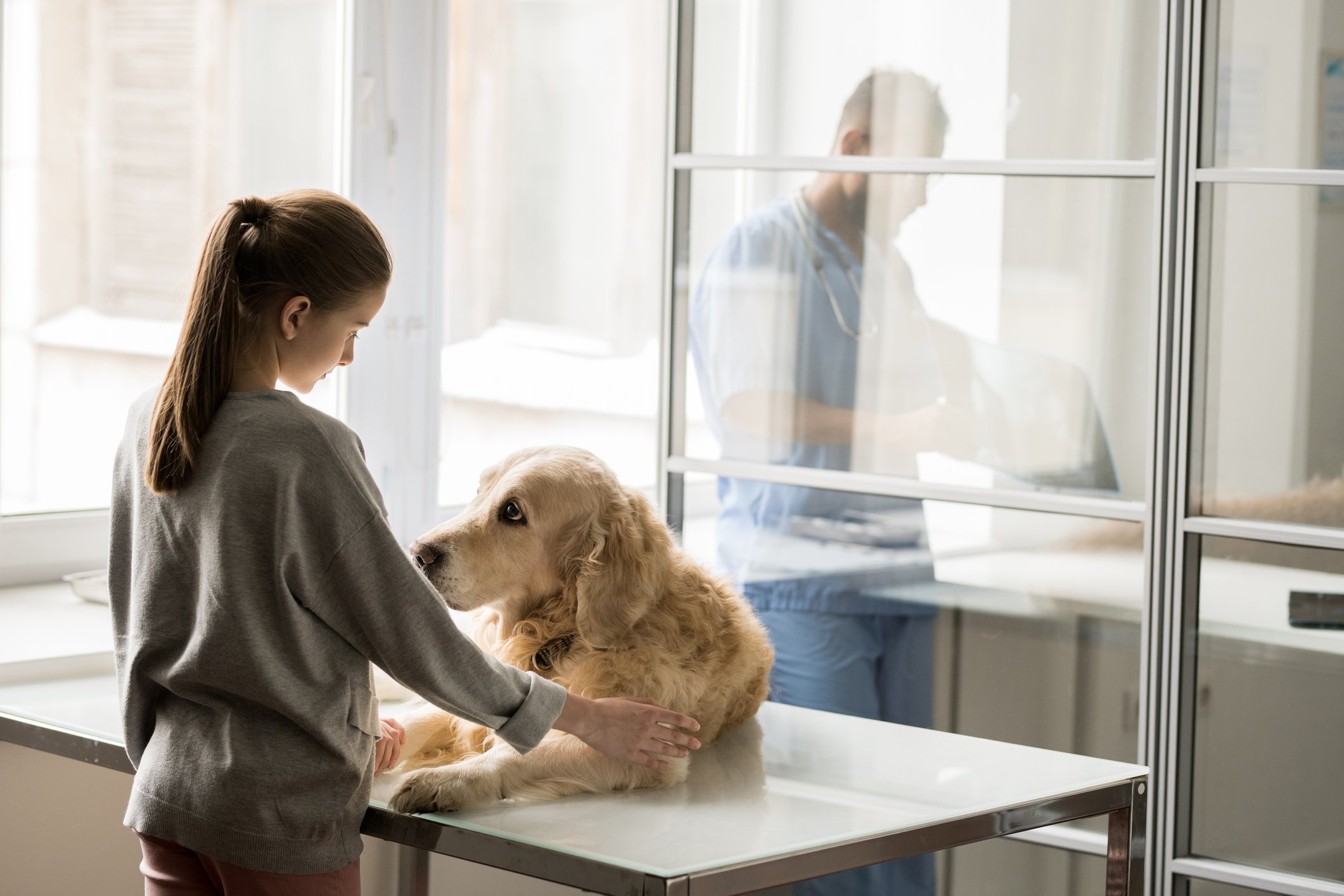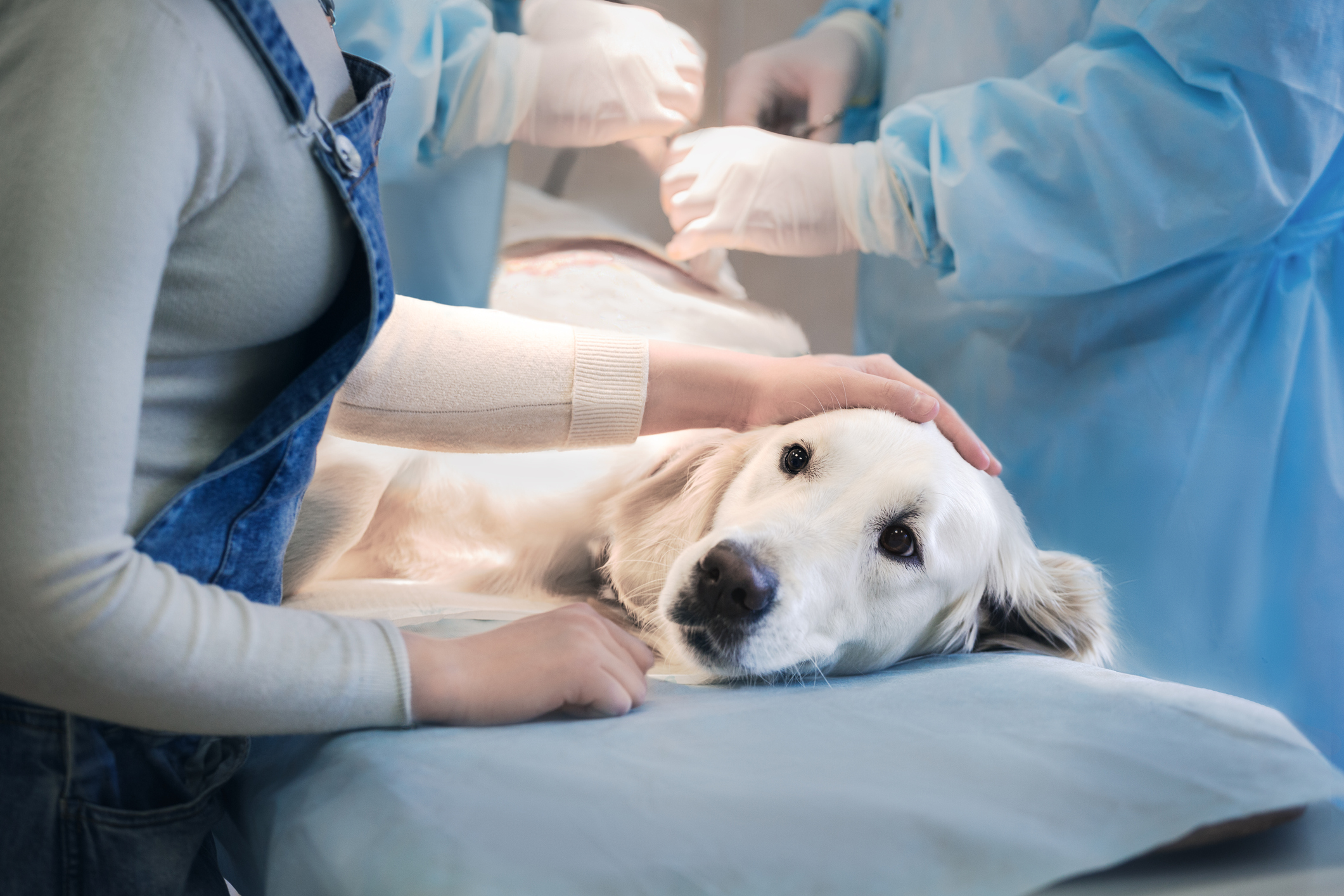
What is The Link Between Canine Mammary Cancer and Your Unspayed Dog?
Breast cancer is a reality many humans have to face—whether in themselves, their partner or another loved one. But what many people don’t realize is that their dogs can suffer from breast cancer, too.
Sadly, mammary cancer is actually one of the most common forms of cancer in dogs—particularly female dogs who have not been spayed. While the cancer is rare in male dogs, it affects many female dogs over the age of one. Fortunately, there is a way you can help minimize your furry friend’s risk for this form of dog cancer and keep them happy and healthy.
Understanding mammary cancer
Female dogs have five sets of mammary glands along their chest, stomach and groin areas. Each set of five glands along the left or right side of the body create a “mammary chain,” which allows your pup to develop milk to feed her puppies. These mammary chains are also susceptible to developing cancerous tumors.
Mammary cancer causes the growth of tumors on the mammary glands/chains. These tumors may be benign or malignant—approximately half of all mammary tumors are malignant and will require an aggressive treatment plan to prevent their spread. Dogs with mammary cancer may have only one tumor, or they may develop multiple on the same or different mammary glands. They may also develop both benign and malignant tumors simultaneously.
The main symptom of mammary cancer is the presence of a tumor on the mammary glands. Depending on the stage or spread of the disease, your dog’s lymph nodes may appear swollen, as well.

As the cancer progresses, other symptoms may include the typical signs of pet illness, including loss of appetite, lethargy, weight loss and behavioral changes. One particular type of mammary cancer—inflammatory mammary carcinoma—can cause additional symptoms, including redness, swelling and pain on the affected gland.
Mammary cancer can affect dogs of almost any age, but it is much more common in dogs around the age of 10. Certain dog breeds may have a higher risk of developing mammary cancer, including Chihuahuas, Poodles, Dachshunds, Yorkshire Terriers, Cocker Spaniels, Brittany Spaniels, English Setters, Boxer Dogs and Doberman Pinchers.
An easy way to reduce your dog’s risk for mammary cancer
Mammary cancer is much more common in intact female dogs. Experts believe that there is a hormonal link to breast cancer in dogs, resulting in intact dogs’ higher risk.
By having your dog spayed before they reach their first or second heat cycle, their risk for mammary cancer may be significantly reduced. The risk of mammary cancer development is believed to increase between the first and second heat cycles, so the earlier you can have your dog spayed, the better.
While spaying female dogs cannot prevent mammary cancer entirely, it can make it less likely for your dog to develop the cancer. This is perhaps one of the most important benefits of spaying your dog as early as is safe and possible, but there are many other benefits to having your dog fixed, as well.
Keeping your furry friend intact might also make it more difficult for you to detect the early stages of mammary cancer. One of the ways to tell that your pup has developed a mammary gland tumor is by feeling or seeing a lump near the mammary chain.
Unfortunately, lumps near the mammary glands may appear while your dog is in heat because the glands are creating lots of new cells at this time. This condition is called mammary gland hyperplasia and can create some confusion if you later discover a lump and believe it is hyperplasia, rather than a potentially malignant tumor.
Treating mammary cancer in dogs

If you notice a lump on your dog’s chest or stomach, you should contact your vet right away. A veterinary examination will be necessary to diagnose mammary cancer in your dog. If a mammary tumor is identified, the main course of action is to remove it with surgery. After it has been removed, a biopsy can determine whether or not the tumor was malignant and if more steps are necessary to mitigate the cancer’s spread.
If your dog has not been spayed at the time of their tumor removal, your vet may suggest that the procedure be completed then or as soon as possible after, in order to potentially reduce your dog’s chances for relapse.
If your dog’s mammary cancer has spread to other areas of the body, your vet may recommend other forms of cancer treatment, such as chemotherapy. You may also want to consider adding alternative forms of treatment to your dog’s cancer treatment plan to help improve their quality of life. Things like medicinal mushrooms and herbal medicines may help support their body’s immune system and even prevent the spread of their cancer.
As with most types of cancer, early detection has the potential to drastically improve your pet’s prognosis. If the cancer is given time to progress and spread, the prognosis can be poor. But, with early detection and surgery, many dogs go on to live long and happy lives.


